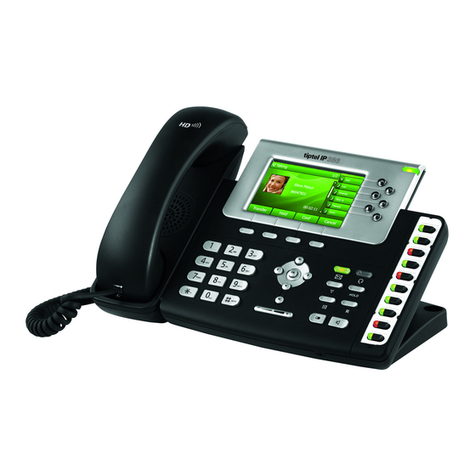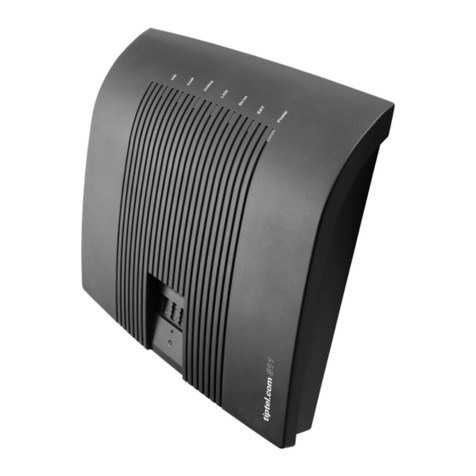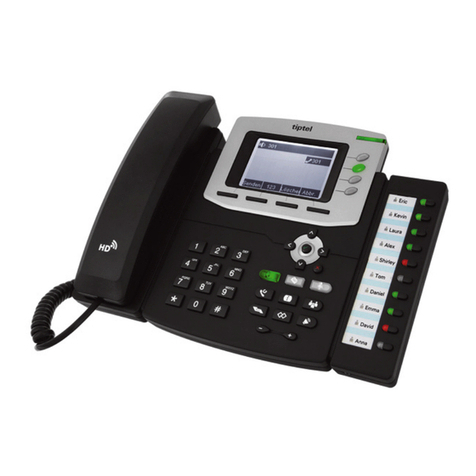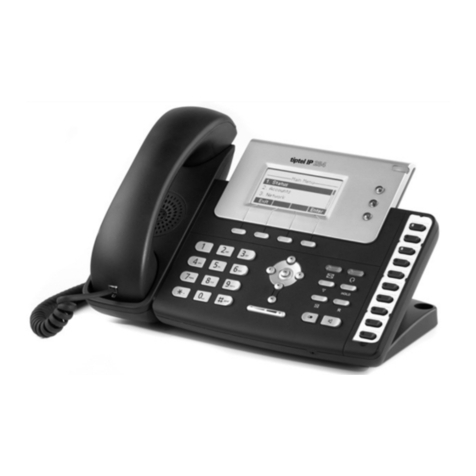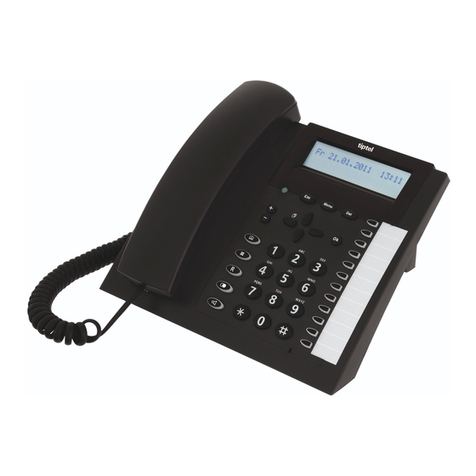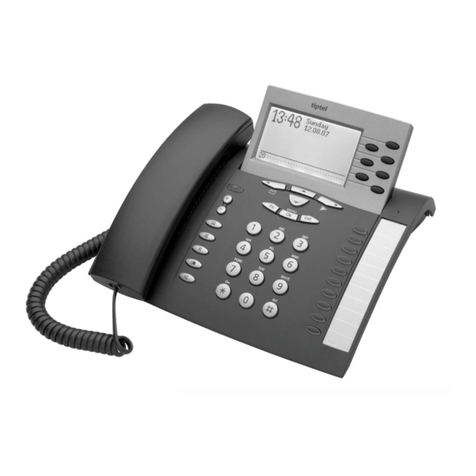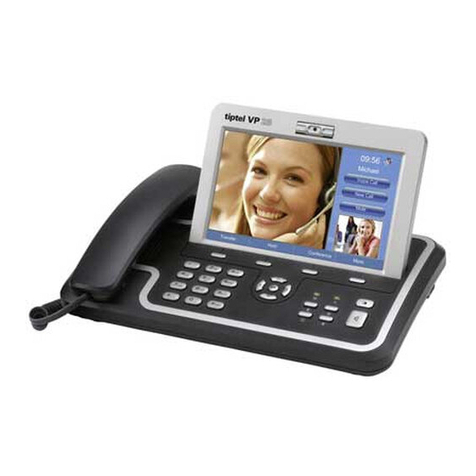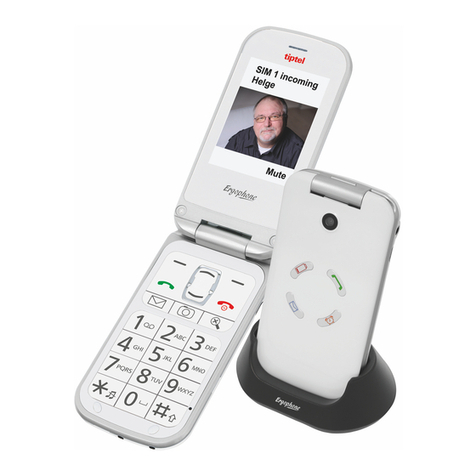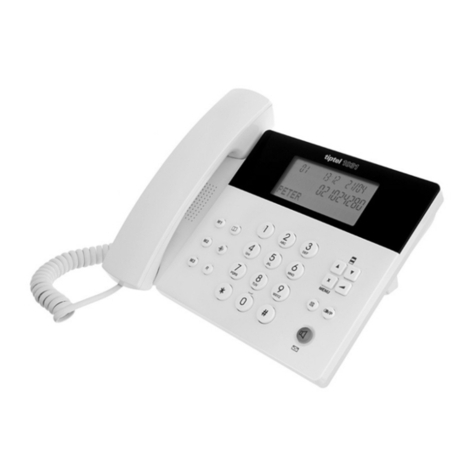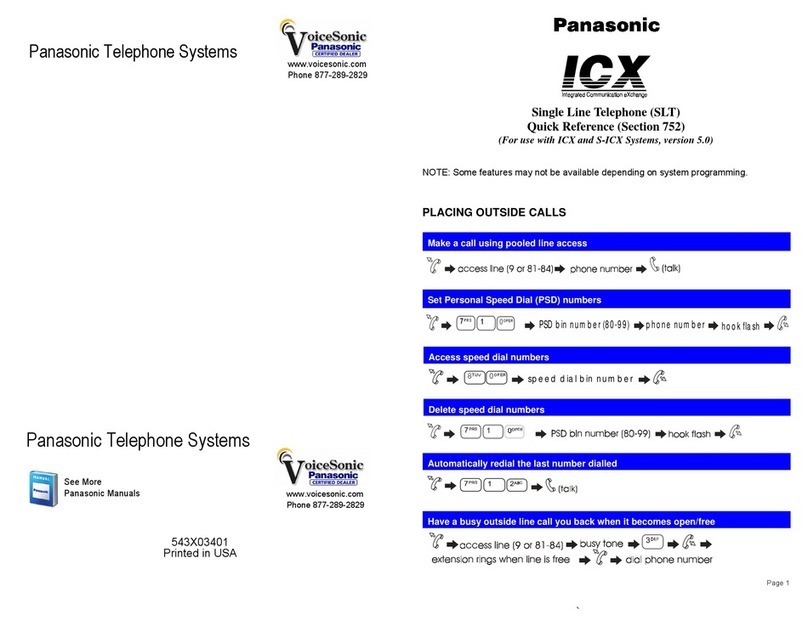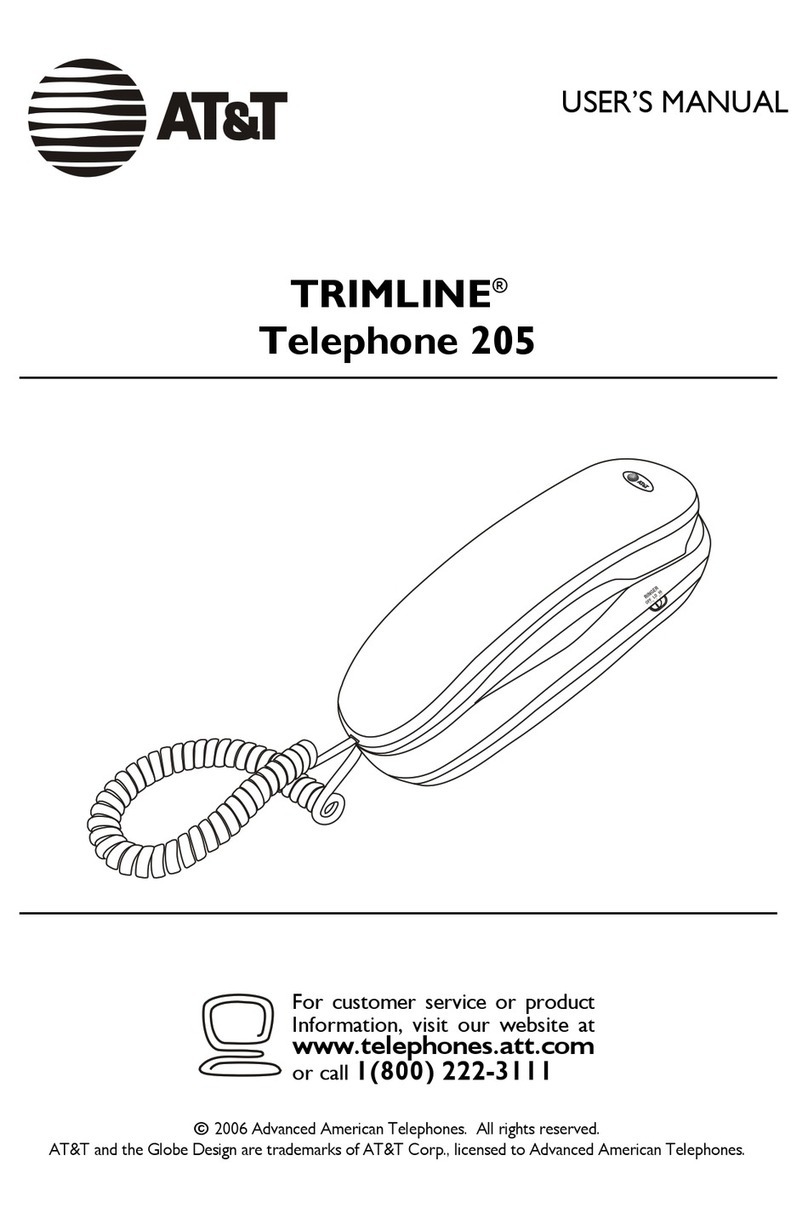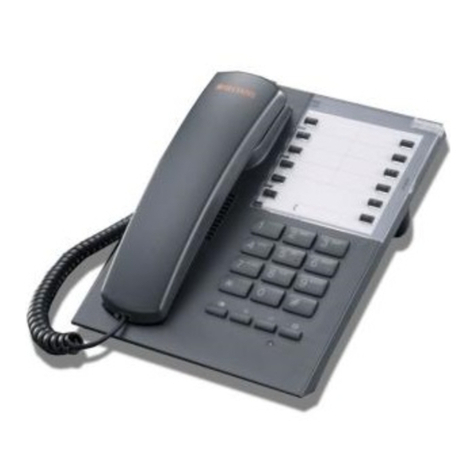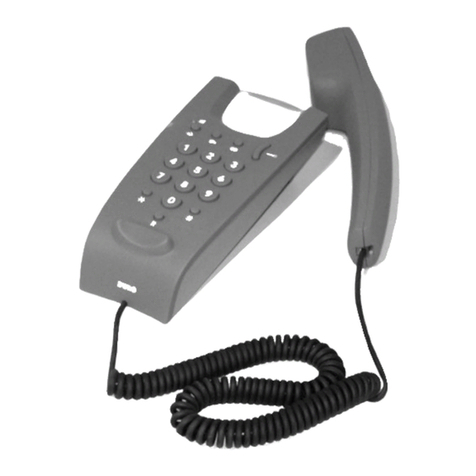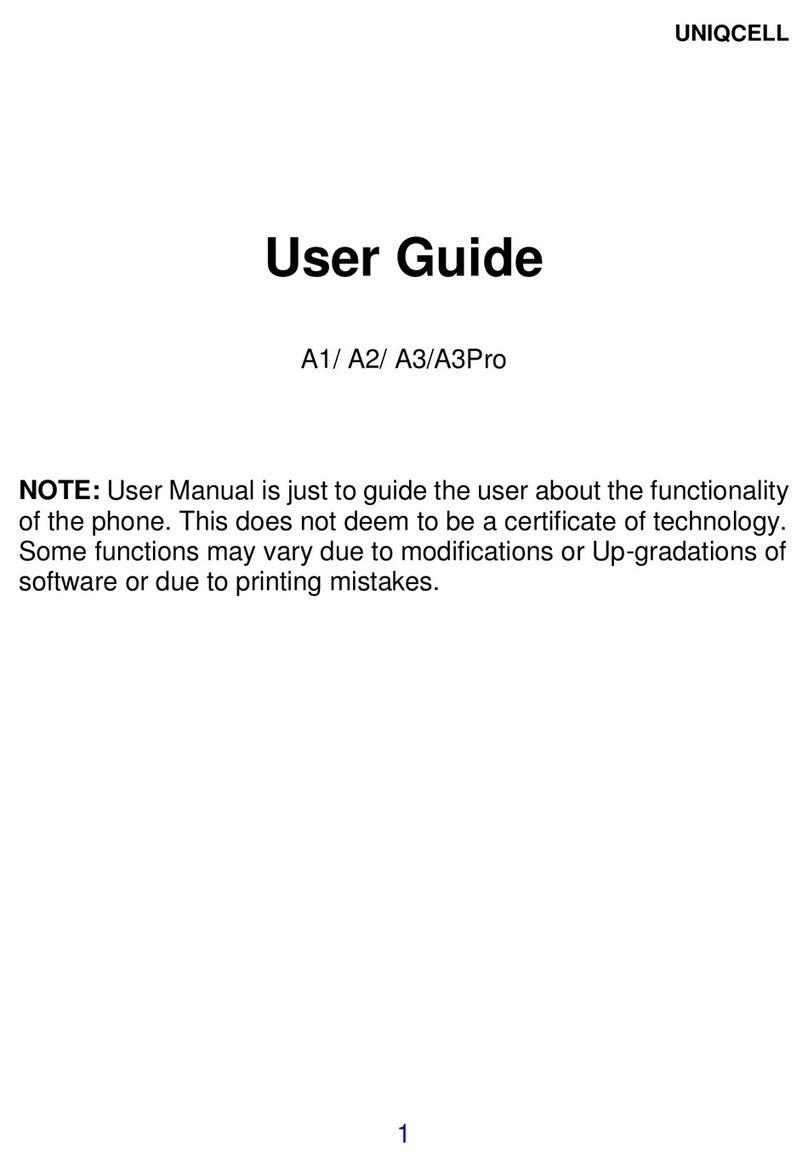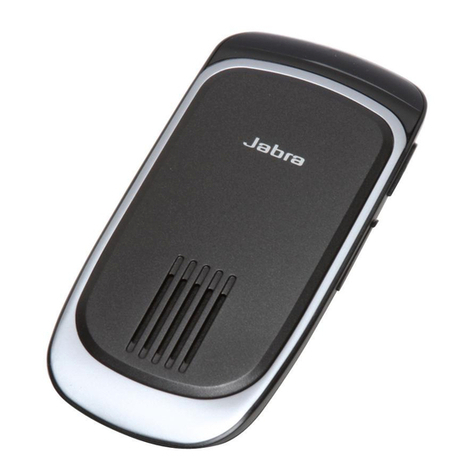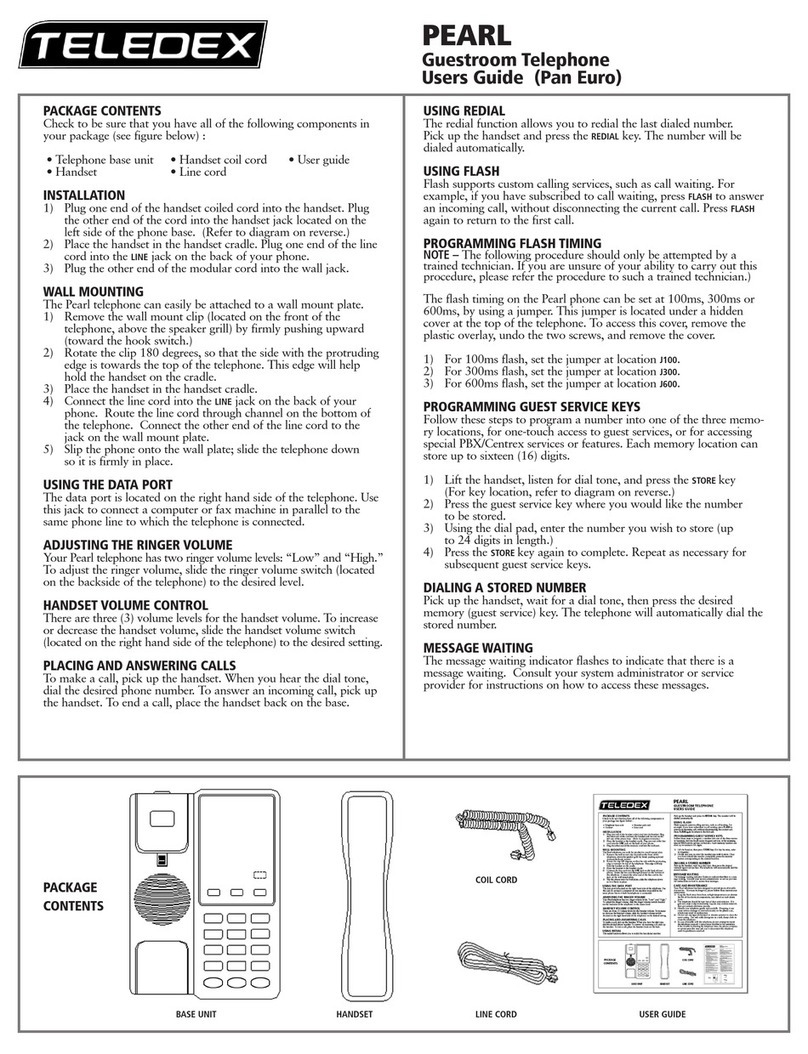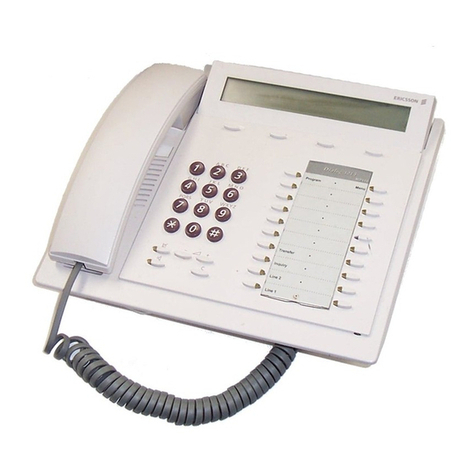2
Table of contents
Illustrations
Upper housing 3
Lower housing 4
Initial operation
Scope of supply/special accessories 5
Connection 5-6
Insert/exchange batteries 7
Emergency operation in the case of a
power failure 7
ISDN connection 8
PC connection/tipcom 8
Factory pre-set 9
Operational hints
Button functions/ special characters 10
Special functions 11
Initial state 12
Symbols and short descriptions 13
Battery check 14
Volume adjustment 14
Setting handset's volume 14
User interface / Main menu 15
Telephone calls
Call counter 16
Direct manual call 16-17
Off-line call preparation (indirect call) 17
Sending short messages 18
Dialling from the electronic
telephone book 19
Redialling 19-20
Automatic redialling 21
Loudspeaker 22
Hands-free conversation 23
Switch between handset and
hands-free mode 23
Mute function 24
Two-way conversation recording 24
Call tracing 25
Placing conversation on hold /interrupting
conversation /terminating a call 2-line 25
Operation with hold/three party conference 26
Call transfer 27
Call parking /call waiting 28-29
Call list 29-30
Answering incoming calls 31-32
Keypad / sub-addressing 32
Electronic telephone book
General information 33
Storing telephone numbers 33
Settings 33
Individual charge counter 34
Filter 34
Individual outgoing message 34
Multiple subscriber number (MSN) 35
Ringing tone 35
Enter additional information 35
Edit entries 36
Settings
Time / date 36-37
Ringing tone 37-38
Do not disturb function 38
Code lock / direct dialling 39
Setting call waiting 40
PABX parameters 40-41
Charging informations 41
SMS settings (short message service) 42
Entering the MSN 43
Call forwarding 44-45
CLIP 45
Changing the PIN code 46
Headset 47
Call blocking 47-49
Call transfer 49
Call diversion 50
Paging calls
General information on paging calls 51
Store pager message 51
Outgoing paging calls 52
Appointments
General information on appointments 53
Entering appointments 53-54
Editing appointments 55
Reminder for appointments 55-56
General information on time control 56
Entering time control data 57-58
Editing switching times 59
Information
Charge counter 60
Charges for the entire connection 60-61
Memory 61
Calls 62
LCR
Selection of telecommunication providers 63
Entering the provider data 64
Entering the switching times 65
Entering the public holidays 66
Entering the tariff zones 67
Assigning tariff zones to different providers 67-68
Answering machine
Outgoing messages (OGM) 68-70
Recording/testing/erasing OGMs 68-70
Answering machine settings 71
Answering mode settings 72-73
Playing back/erasing incoming messages 72-73
Dictate / information 75
Message transfer 75-76
Message transfer settings 76-77
Remote control
Performing a remote interrogation 78
Feature functions 78-79
Remote control functions 79-81
Remote control settings 82-83
iscellaneous
Important information 84
Troubleshooting / warranty 85
Index 86
Technical data 87


